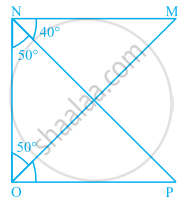Advertisements
Advertisements
Question
In the given pairs of triangles of figure, applying only ASA congruence criterion, determine which triangles are congruent. Also, write the congruent triangles in symbolic form.
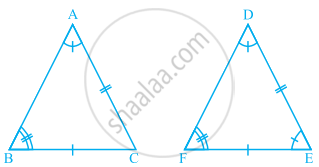
Solution
In ∆ABC and ∆DFE,
∠A =∠D ......(Given)
∠B = ∠F ......(Given)
∴∠C = ∠E ......(Since two angles are equal)
BC = FE ......(Given)
∴ ∆ABC ≅ ∆DFE ......(ASA criterion)
APPEARS IN
RELATED QUESTIONS
By applying the ASA congruence rule, it is to be established that ∆ABC ≅ ∆QRP and it is given that BC = RP. What additional information is needed to establish the congruence?
In Fig, can you use the ASA congruence rule and conclude that ∆AOC ≅ ∆BOD?

Consider the given pairs of triangles and say whether each pair is that of congruent triangles. If the triangles are congruent, say ‘how’; if they are not congruent say ‘why’ and also say if a small modification would make them congruent: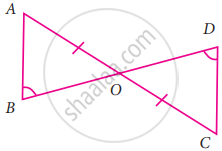
State whether the two triangles are congruent or not. Justify your answer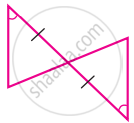
To conclude the congruency of triangles, mark the required information in the following figure with reference to the given congruency criterion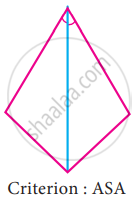
For the given pair of triangles state the criterion that can be used to determine the congruency?
If hypotenuse and an acute angle of one right triangle are equal to the hypotenuse and an acute angle of another right triangle, then the triangles are congruent.
AAS congruence criterion is same as ASA congruence criterion.
In the given pairs of triangles of figure, applying only ASA congruence criterion, determine which triangles are congruent. Also, write the congruent triangles in symbolic form.
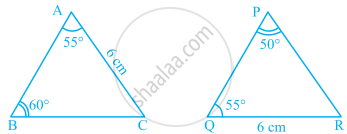
In the given pairs of triangles of figure, applying only ASA congruence criterion, determine which triangles are congruent. Also, write the congruent triangles in symbolic form.
